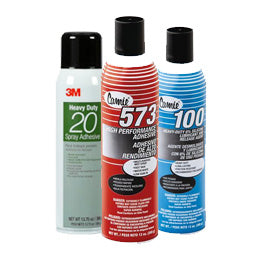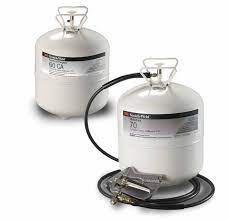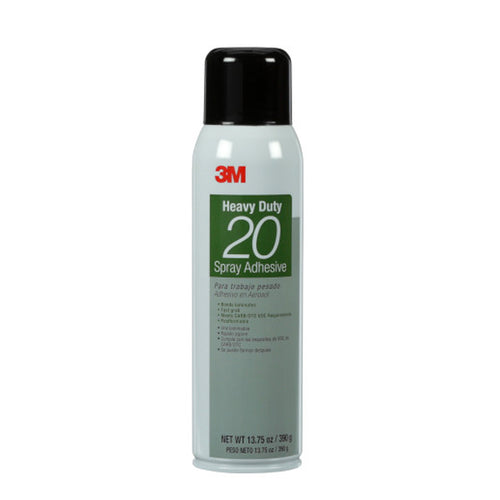Updated: November 27, 2024
Over the last several decades, adhesives have become a common presence in homes, businesses, and everything in between. From food packaging to furniture and electronics to construction, adhesives can be found almost anywhere. But with the growing use of adhesives comes the growing environmental concerns related to them like VOCs.
What are VOCs?
VOCs, or volatile organic compounds, is the name for a group of chemicals that will easily evaporate into gas at room temperature. Some examples of VOCs include benzene, formaldehyde, acetone, and chloroform.
Each chemical can have different effects, but in general, VOCs can be damaging to both the environment and a person's health. VOCs can form ground-level ozone, a key ingredient in smog that can lead to environmental degradation. In terms of a person's health, short-term exposure to VOCs may lead to nausea, dizziness, throat irritation, and headaches. Chronic exposure could lead to cancer, liver damage, kidney damage, or central nervous system damage.1
VOCs can be found in a variety of common household products including:
- Paints
- Cleaners
- Pesticides
- Gasoline
- Adhesives
VOCs in Adhesives
Volatile organic compounds are common in adhesives, sealants, and tapes. These thinners and solvents work with the adhesive resin to help make the adhesive workable. Once the adhesive is applied, these chemicals will start to evaporate into the air in a process known as off-gassing.
Different adhesives also have different levels of volatile organic compounds. When using adhesives with higher levels of VOCs, it is often recommend to work in a well-ventilated area or wear a facemask to reduce inhalation of these chemicals.
Introducing Low VOC Adhesives
Because of the potential drawbacks that come with high VOC adhesives, there has been a push for alternative products. In more recent years, low VOC adhesives have started to make an appearance on the market.
Low VOC glues are specifically designed to reduce the amount of volatile organic compounds they emit without compromising their bonding performance. To be considered a low VOC adhesive, these products usually do not exceed 150 grams per liter. In contrast, high VOC adhesives may reach levels of 250 grams per liter or more.
Adhesives with low volatile organic compounds come in various forms and are suitable for a wide range of applications. They are also several benefits of low VOC adhesives including:
- Fewer health risks
- Decreased environmental impact and better sustainability
- Improved air quality
- Compliance with government regulations
Laws Surrounding Low VOC Adhesives
Because of environmental and health concerns, some government regulations have been put in place regarding VOC levels in adhesives and sealants. As a result, VOC-compliant adhesives are now mandatory in some areas.
The state of California, for example, has passed laws requiring particular categories of spray adhesives to comply with more stringent VOC requirements. The restrictions differ somewhat depending on the type and size of manufacturer. For example, large-scale, national manufacturers now have to sell an alternative VOC-compliant spray adhesive in the state of California.2
Similarly, Colorado has regulations prohibiting the sale, distribution, and manufacturing of consumer products with VOC contents above certain limits. Aerosol mist sprays, for example, have a VOC content limit of 65%, but structural waterproof adhesives have a limit of 15%.3
As time passes, more and more states are imposing regulations to promote the use of low VOC glues and adhesives to keep consumers safe.
Low VOC Adhesive Products
With these new regulations, many manufacturers started launching new products to meet these new standards. At first, some low VOC adhesives ticked the right boxes environmentally, but they frequently failed to deliver the required level of performance and durability. We heard several stories of costly and time-consuming product recalls following low VOC glues coming unstuck within a few months.
Fortunately, the latest generation of low VOC adhesives are eco-friendly without compromising product performance. As more and more low VOC adhesive glues are hitting the market, our team of adhesive experts wants to share a few of the high-quality, low VOC adhesives we have available for purchase.
3M Super 77 Low VOC Spray Adhesive

This product is the low VOC version of the 3M Super 77 spray glue. It has the same basic capabilities as the original product but with a VOC of less than 25%. The mist spray adhesive can be used to bond lightweight materials like foils, paper, cardboards, cloth, or felt and is fast drying.
Infinity Spray 990CA
This bulk low VOC spray adhesive meets CA and OTC state regulations. It comes in a spray tank for high-volume applications and is applied in a web spray pattern. It is also repositionable with a long open time for quick temporary bonding.
These are just a few of the low VOC adhesives that are eco-friendly without compromising on performance. And because the technologies and methods used to create adhesive formulas are constantly evolving, you can expect even more amazing products to be released in the years ahead.
Find What You Need
Low VOC adhesives are an important innovation in the adhesive industry. Whether you are a business owner needing to meet certain environmental regulations or you are just looking for a low VOC spray adhesive for everyday use, we want to help you find the right product for your application.
Contact us today to get a product recommendation or for more general information about low VOC adhesive products.
Sources:
- EPA - Volatile Organic Compounds' Impact on Indoor Air Quality
- California Air Resources Board (2023) - THE CALIFORNIA CONSUMER PRODUCTS REGULATIONS
- Code of Colorado Regulations - REGULATION NUMBER 21 CONTROL OF VOLATILE ORGANIC COMPOUNDS FROM CONSUMER PRODUCTS AND ARCHITECTURAL AND INDUSTRIAL MAINTENANCE COATINGS












